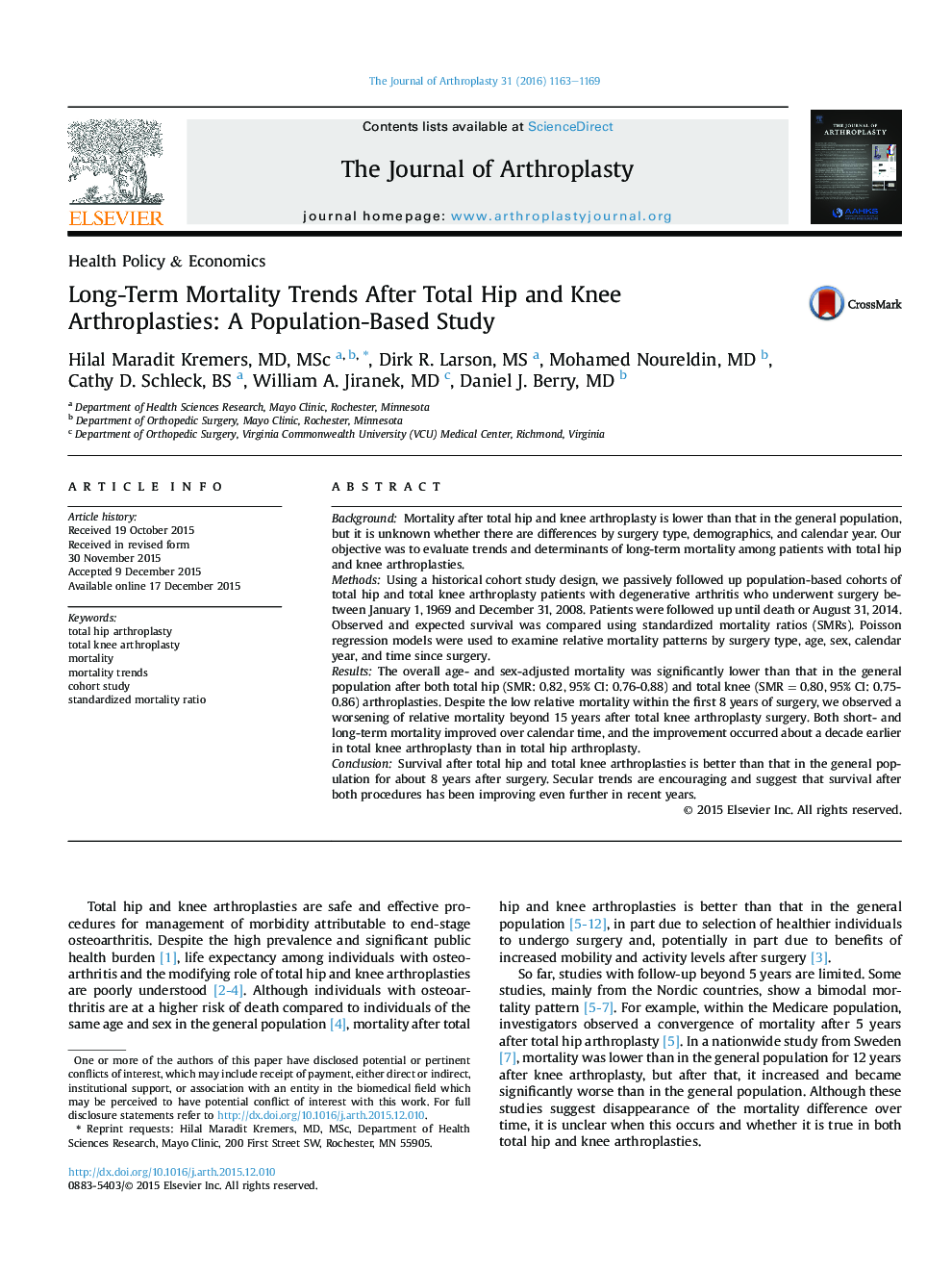| کد مقاله | کد نشریه | سال انتشار | مقاله انگلیسی | نسخه تمام متن |
|---|---|---|---|---|
| 4059865 | 1603976 | 2016 | 7 صفحه PDF | دانلود رایگان |
BackgroundMortality after total hip and knee arthroplasty is lower than that in the general population, but it is unknown whether there are differences by surgery type, demographics, and calendar year. Our objective was to evaluate trends and determinants of long-term mortality among patients with total hip and knee arthroplasties.MethodsUsing a historical cohort study design, we passively followed up population-based cohorts of total hip and total knee arthroplasty patients with degenerative arthritis who underwent surgery between January 1, 1969 and December 31, 2008. Patients were followed up until death or August 31, 2014. Observed and expected survival was compared using standardized mortality ratios (SMRs). Poisson regression models were used to examine relative mortality patterns by surgery type, age, sex, calendar year, and time since surgery.ResultsThe overall age- and sex-adjusted mortality was significantly lower than that in the general population after both total hip (SMR: 0.82, 95% CI: 0.76-0.88) and total knee (SMR = 0.80, 95% CI: 0.75-0.86) arthroplasties. Despite the low relative mortality within the first 8 years of surgery, we observed a worsening of relative mortality beyond 15 years after total knee arthroplasty surgery. Both short- and long-term mortality improved over calendar time, and the improvement occurred about a decade earlier in total knee arthroplasty than in total hip arthroplasty.ConclusionSurvival after total hip and total knee arthroplasties is better than that in the general population for about 8 years after surgery. Secular trends are encouraging and suggest that survival after both procedures has been improving even further in recent years.
Journal: The Journal of Arthroplasty - Volume 31, Issue 6, June 2016, Pages 1163–1169
